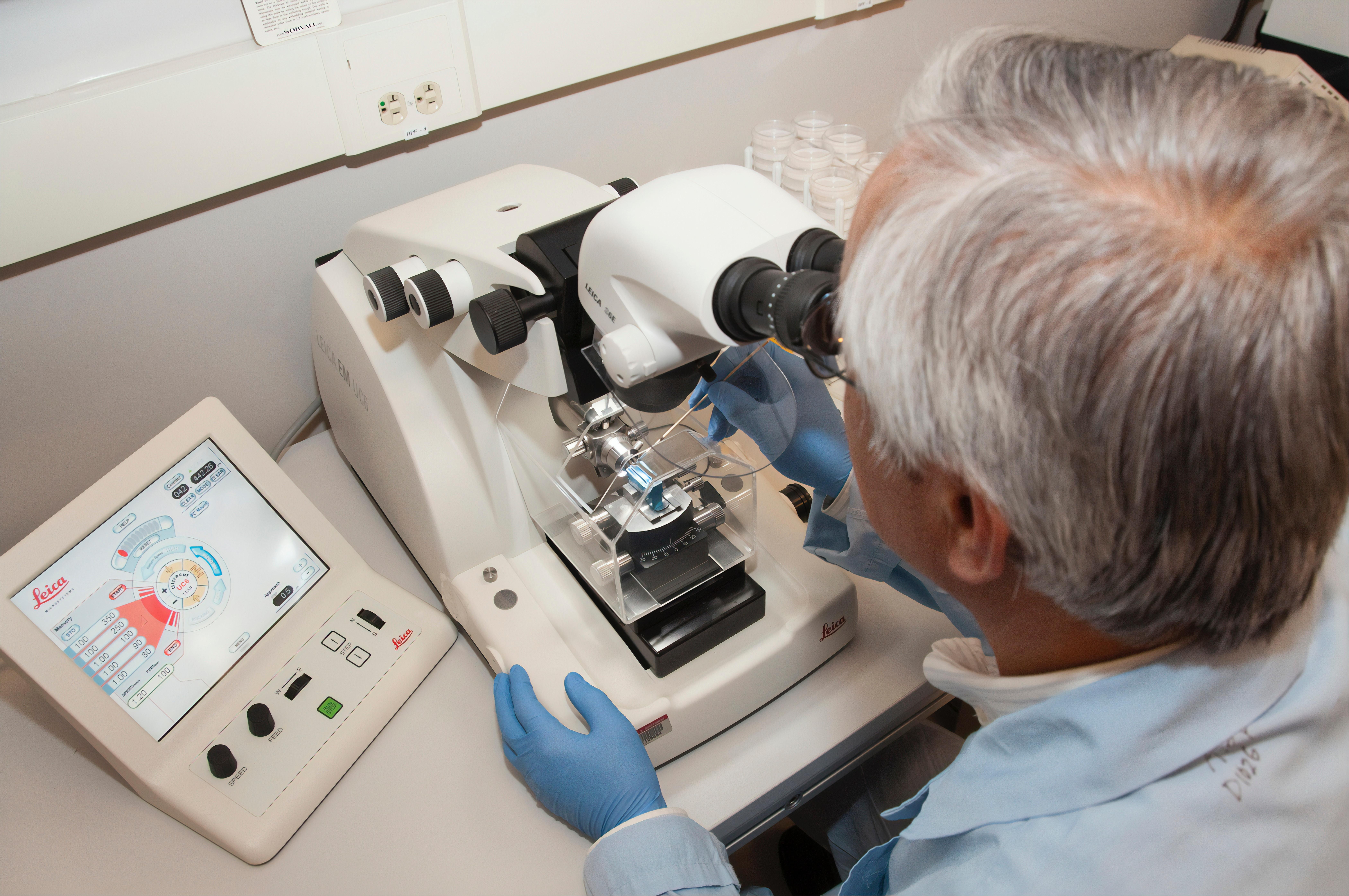Are you ready to dive into the mesmerizing world of electron microscopes? Get ready to uncover the secrets behind these powerful scientific instruments as we embark on an enlightening journey through the realm of electron microscope facts. As a seasoned science writer and researcher with a background in microscopy, I am here to guide you through this captivating subject. With my expertise in the intricate world of cellular structures and nanotechnology, I possess a wealth of knowledge that will bring clarity to the complexities of electron microscopy. So, buckle up and prepare to be amazed as we unravel the mysteries of electron microscopes and explore their fascinating applications.
Electron Microscope Facts
Are you ready to dive into the mesmerizing world of electron microscopes? Get ready to unveil some mind-blowing facts about these extraordinary scientific instruments. From the incredibly high magnification power to the strange requirements of a vacuum chamber, electron microscopes are truly fascinating. So, buckle up and prepare to have your mind blown!

The Beam of Electrons: The Key to Magnification
Electron microscopes revolutionized our ability to see objects at the tiniest scale possible. How do they achieve such incredible magnification? The secret lies in the beam of accelerated electrons used as the source of illumination. Unlike regular light microscopes, which rely on visible light waves, electron microscopes utilize a beam of electrons to illuminate the object under scrutiny. These electrons have a much shorter wavelength, allowing them to resolve even the finest details. With this remarkable beam, electron microscopes can magnify objects up to a staggering 1 million times!
The Vacuum Chamber: Creating an Airless Space
Now, let’s talk about the peculiar requirement of a vacuum chamber. Why must objects be placed in a vacuum before they can be seen with an electron microscope? The reason is simple: electrons tend to interact with air molecules, making it nearly impossible to create a clear image. By placing objects in a vacuum chamber, we eliminate the pesky air molecules and allow the electron beam to interact solely with the specimen. This enables scientists to obtain crisp and detailed images, revealing the intricate structures and composition of various materials.
Signals and Interactions: Tracing the Secrets
To capture valuable information about an object’s structure, morphology, and composition, electron microscopes employ a clever technique. They utilize the signals that arise from the interaction of the electron beam with the sample. As the electrons interact with the specimen, they produce signals such as secondary electrons, backscattered electrons, or transmitted electrons. These signals provide valuable insights into the object’s properties. By analyzing these signals, scientists can uncover the secrets hidden within nanoscale structures, biological cells, and even inorganic materials.
Diverse Types of Electron Microscopes
Electron microscopes come in different flavors, each tailored to meet specific research needs. Let’s explore some of the most common types:
-
Transmission Electron Microscope (TEM): This microscope allows scientists to examine incredibly thin slices of specimens. The electron beam passes through the object, creating a transmission image. TEM is perfect for investigating the ultrafine details of cellular structures, nanoparticles, and crystal structures.
-
Scanning Electron Microscope (SEM): SEM takes a different approach, offering a detailed view of an object’s surface. The electron beam scans the specimen, creating a 3D-like image. SEM excels at examining the topography, morphology, and elemental composition of various materials, making it invaluable in fields like materials science and nanotechnology.
-
Reflection Electron Microscope (REM): REM is a powerful tool for studying surfaces and interfaces. In REM, the electron beam is reflected off the specimen, revealing details about the atomic arrangement and surface properties. This technique offers valuable insights in fields like thin film analysis, surface chemistry, and semiconductor research.
Now that we’ve peeled back the curtain on these electron microscope facts, you can appreciate the incredible capabilities of these scientific marvels. From their ability to reveal the hidden beauty of nanoscale structures to their role in advancing diverse fields of research, electron microscopes truly have the power to unlock a world of knowledge.
As we journeyed through the realm of electron microscope facts, we encountered the beam of accelerated electrons that enables massive magnification. Exploring the need for a vacuum chamber, we discovered the importance of the airless environment for achieving crystal-clear images. By delving into the signals and interactions, we unveiled the secrets that can be traced in electron microscope images. Finally, we examined the different types of electron microscopes, each with its own unique capabilities and applications.
But this is just the tip of the iceberg! There is so much more to discover in the world of electron microscopy. With every new technological advancement, scientists continue to push the boundaries of what we can observe and understand. So, embrace your curiosity and keep exploring the amazing world of electron microscopes!
The electron microscope is truly a marvel of modern science. It allows us to peer into the microscopic world with incredible detail and clarity. Did you know that the electron microscope can magnify objects up to a million times their actual size? It’s mind-boggling to think about! If you’re curious to learn more fascinating facts about the electron microscope, click here to uncover an array of mind-blowing information. Don’t miss this opportunity to expand your knowledge and be amazed!
FAQ
Question 1
What is an electron microscope?
Answer 1
An electron microscope is a scientific instrument that uses a beam of accelerated electrons as a source of illumination. It is capable of producing high-resolution images of tiny objects, surpassing the resolving power of a light microscope.
Question 2
How powerful is the magnification of an electron microscope?
Answer 2
Electron microscopes have the ability to magnify objects up to 1 million times. This level of magnification allows researchers to observe fine details and structures that are not visible with other types of microscopes.
Question 3
Why is a vacuum necessary for electron microscopy?
Answer 3
In order to visualize the sample with an electron microscope, the object must be placed in a vacuum or airless space. This is because the electrons used in the microscope can easily interact with molecules in the air, leading to distortions and loss of image quality.
Question 4
How do electron microscopes obtain information about a sample?
Answer 4
Electron microscopes use signals generated from the interaction of an electron beam with the sample to gather information about its structure, morphology, and composition. These signals can include backscattered electrons, secondary electrons, or transmitted electrons, depending on the type of electron microscope being used.
Question 5
What are the different types of electron microscopes?
Answer 5
There are three main types of electron microscopes:
1. Transmission Electron Microscopes (TEM): These microscopes transmit electrons through the sample and produce detailed images of the internal structure.
2. Scanning Electron Microscopes (SEM): SEMs scan the surface of a sample with a focused electron beam and provide high-resolution 3D images.
3. Reflection Electron Microscopes (REM): REMs analyze the electrons that bounce off the sample’s surface, allowing for surface structure characterization.
- Unveiling the Enigma: Mansoureh Khojasteh Bagherzadeh’s Public Appearances & Private Life in Iran - July 18, 2025
- Unveiling the Mystery: Mansoureh Khojasteh Bagherzadeh’s Husband: A Rare Glimpse into a Private Life - July 18, 2025
- Unveiling Masoud Khamenei’s Mother: Power, Influence, and Iran’s Future - July 18, 2025
















